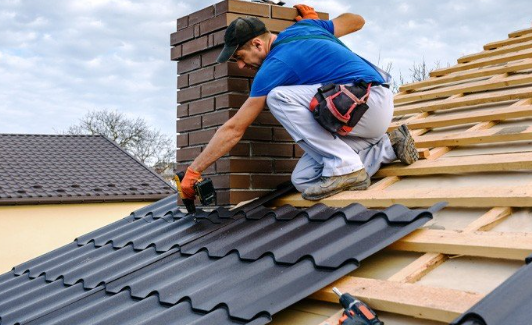Texas homeowners take pride in their homes. With this in mind, keeping their homes up-to-date, and safe becomes a top priority. When a roof is damaged, old, or simply no longer aesthetically pleasing, it may be time for a professional roof replacement. Allow us to assist you with this handy guide on roof replacements for Texas homeowners:
What Factors Impact Your Roof’s Longevity?
One of a house’s most crucial components is its roof, which offers cover from the elements and safeguards the rest of the building from harm. Commercial roofing contractors can help you understand more about your roof’s longevity. But how long does a roof last and what variables can shorten or lengthen its life? Educating yourself about the factors that impact your roof’s longevity becomes key.
Firstly, you’ll need to consider the lifespan of the type of roof you own. Composition shingles, metal roofs, and clay or concrete tile roofs are the three most prevalent roof types in Texas. The most popular option for residential homes is composition shingles due to their affordability and simplicity of installation. They normally remain safe and secure for a period of fifteen to twenty years, which is a shorter lifespan than other kinds of roofing. While clay and concrete tile roofs can last fifty to one hundred years, metal roofs are significantly more robust, lasting forty to seventy years, but they are also more expensive. Finding the right type of roof for your budget, and how long you plan to live in a home, becomes crucial.
Secondly, you’ll need to consider the impact of weather and climate on your roofing. Texas weather is all over the place, but depending on which part of the massive state you’re in, you’ll have a better idea of what you need from your roofing. In Texas, the summers are hot and muggy while the winters are pleasant. Roofs may suffer from this weather, particularly poorly ventilated ones. In Texas, roofs should be routinely checked for deterioration indicators including leaks, missing shingles, or protruding nails. By doing this, you can help your roof last longer.
Lastly, you’ll need to consider the impact of past maintenance you’ve performed, and any current maintenance needs, on your roofing’s lifespan. To extend the lifespan of any roof, proper care is essential. If you live in a location with severe weather, inspect your roof more frequently than once a year. Keep an eye out for any symptoms of damage and get them fixed right once. To keep your gutters and downspouts from being blocked and overflowing, you also need to clean them frequently. When investing in roofing later on, whether at a new home or with a roof replacement, considering your maintenance needs is of utmost importance.
How Do You Know When Your Roof Needs to be Replaced?
Depending on how long you live in a home, there will almost certainly come a time when you need to replace your roof, even with proper upkeep. These are several indicators that it’s time for a new roof, which we will cover in more detail below.
Firstly, you must consider the impact of weather damage and wear. Most people check their property for damage almost immediately after a strong storm. They might discover downed fence posts, broken limbs, or even significant structural damage. The roof is one of the most crucial items to examine, though. Weather-related sustained damage can result in leaks, drafts, and finally a collapse. Although most roofs are made to endure strong winds and rain, they are only designed to withstand so much. An expert roofer should evaluate your home as quickly as possible if you notice any missing shingles or damaged flashing.
Secondly, you’ll need to consider the impact of leaks. Many leaks are one telling indicator that it’s time for a new roof. It’s usually cheaper and simpler to replace the entire roof if you’ve had to fix it up multiple times due to leaks. Nothing can compare to the sound of raindrops on your roof, especially if you’re curled up inside reading a nice book. Yet when leaks begin to appear throughout your house, it’s time to accept that your roof needs to be replaced rather than repaired. If ignored, these leaks can seriously harm your house and raise the possibility of mold and mildew growth. When you need to make several repairs, it’s time to make a roof replacement investment.
Lastly, you need to take immediate action if you notice your roof is sagging or collapsing in any area. Sagging or collapsing are some of the riskiest indications that your roof needs to be replaced. Several things, such as severe weather damage, inadequate maintenance, and advancing age, might contribute to this. Call a qualified roofer right away and leave your house if you notice any signs of drooping or collapse. Roofs that are sagging or falling are exceedingly dangerous, and if they aren’t fixed right once, they can seriously harm your house. It might also endanger your and your family’s safety.


